Goddesses and the Nubian Monuments
It was in the Temple for Hathor on Philae island, on the upper Nile, that the argument broke out. How to tell the difference between the goddesses Hathor and Isis in wall engravings on temple walls?
Twelve-year-old certainty, backed by intense, single-minded research, gathered its defences against the might of official tourist guide training. We’re still not sure who won. The fact is, even the experts say it is sometimes hard to tell these two major goddesses of the ancient Egyptian religion apart.
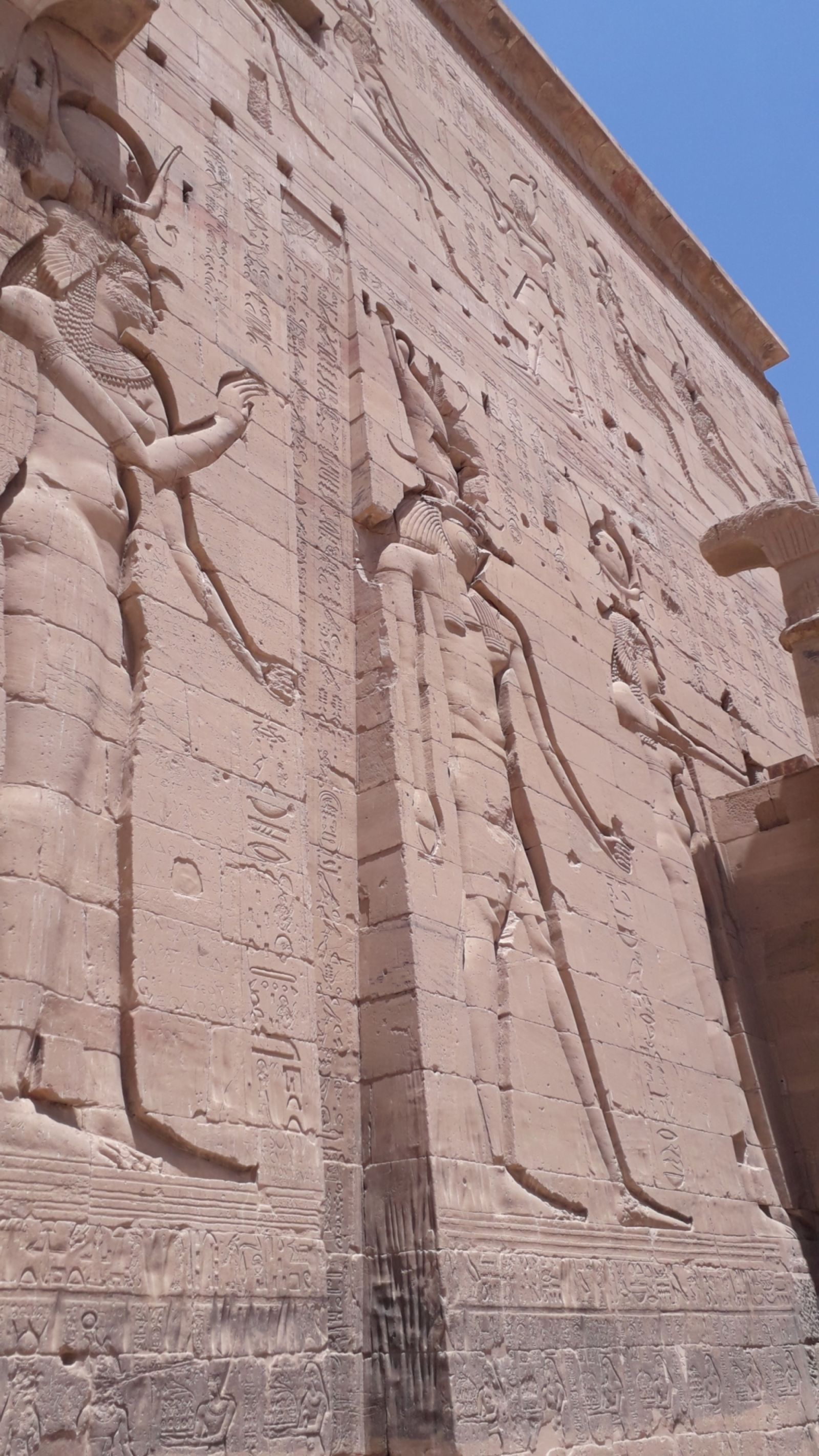
Images of the goddess Hathor, the god Horus (Hathor’s son) and the goddess Isis on a wall at Philae. In temple wall engravings across Egypt Isis is often seen wearing the horns and disk crown of a cow goddess, which is emblematic of Hathor. Sometimes Isis has a small throne on top of the horns and disk to show that she is Isis, not Hathor. Sometimes not. Also, sometimes Hathor is seen wearing Isis’ crown.
The Philae island you visit now is, of course, not the original. Like the stupendous Abu Simbel temples 300km southwards, the island temples were moved, brick-by-brick, to nearby Agilkia Island in the 1970s, to save them from disappearing beneath the waters of Lake Nasser. The lake was created when the Aswan High Dam impounded the Nile.

It's sobering to realise that the UN paid for the complete relocation of the two temples at Abu Simbel, one for Ramesses II (left) and one for his queen, Nefertiti (right). The operation cost $40-million.
So, there we stood, the heat wrapped around us like sheets on a clammy night, while the dispute raged. Outside the sky, impossibly blue, soared, a cavernous backdrop to the gold-coloured temple walls. That the ancient Egyptians saw the sun as a god makes absolute sense. Its power on a summer afternoon is unquestionable.
It’s nothing short of incredible to stand between walls built more than 2 000 years ago, whether you are in the Temple of Isis on Philae, or one of the two massive rock temples at Abu Simbel.
Both are part of the United National Educational, Scientific and Cultural Organization (Unesco) World Heritage Site known as the Nubian Monuments.
Jaws drop at Abu Simbel. The twin temples were originally carved out of a mountainside in the 13th century BCE, on the command of Pharaoh Ramesses II to celebrate his defeat of the Hittites at the Battle of Kadesh, around 1274BCE.
Even the dates slacken the mouth, and that’s before you take in that, starting in 1968, Unesco paid for the temples’ complete relocation to an artificial hill. The two temples were carefully cut into large blocks – averaging 20 tons each – dismantled, lifted and put back together, at a site 200m back and higher than the Nile.
Under a thorn bush at Abu Simbel – the only, and useless, shade at the complex – the Isis-Hathor war of words continued.
It transpires that the headdresses these powerful deities are given in wall etchings can make identification confusing, with the difference between them better revealed in the hieroglyphics carved next to their images.
Perhaps today only 12-year-olds and archaeologists care. What concentrates the less-invested mind is the sheer enormity of the task of building (and, later, relocating) these temples. It calls Ozymandias to mind, except that these majors in the Egyptian pantheon are still remembered, stamped as they are on the walls of these once life-filled edifices.
Travelling to these masterpieces of the Nubian desert evoked deep and contradictory feelings. It is almost impossible not to contemplate the ephemeral nature of any society, no matter how secure it feels at its peak, and also to wonder at how, 20 centuries later, we can still gaze up in awe at Hathor, the mother-god.
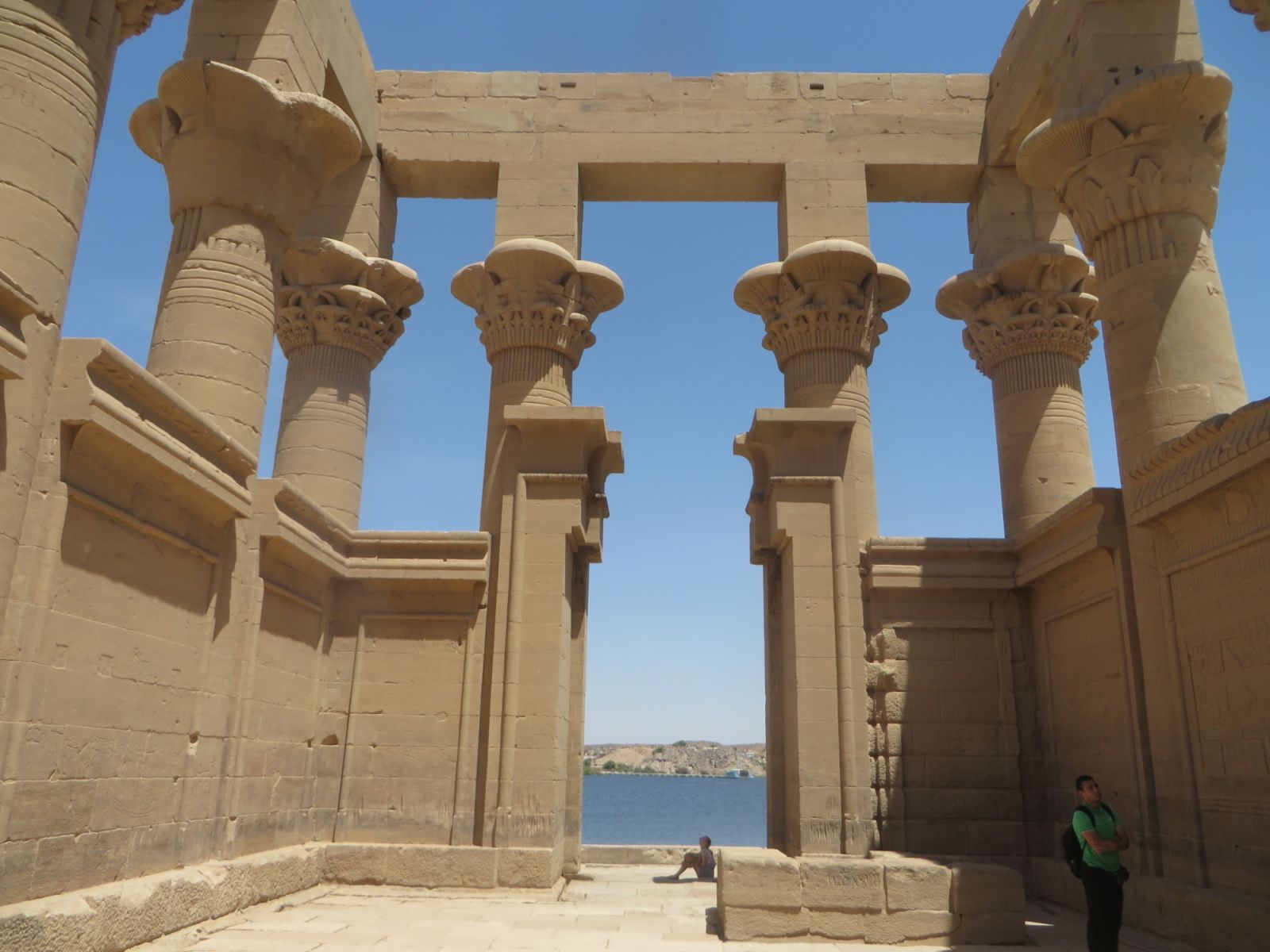
The gorgeously decorated pillars of the kiosk of Trajan at Philae. This utilitarian building is one of the island’s most lovely.
Some tips:
- The Egyptians take tourist safety seriously, so seriously it can sometimes feel oppressive. Tourist police guard each well-trod site, searching bags and watching over crowds. It’s best to keep reminding yourself their work is to keep you safe. We never felt threatened.
- The summer months (May to October) are blisteringly hot, with the temperature in the south at Aswan averaging 42C. Winter at Aswan (December to February) is a far more pleasant average of 25C, but the crowds that throng the more popular sites can be so thick visitors don’t get a real look.
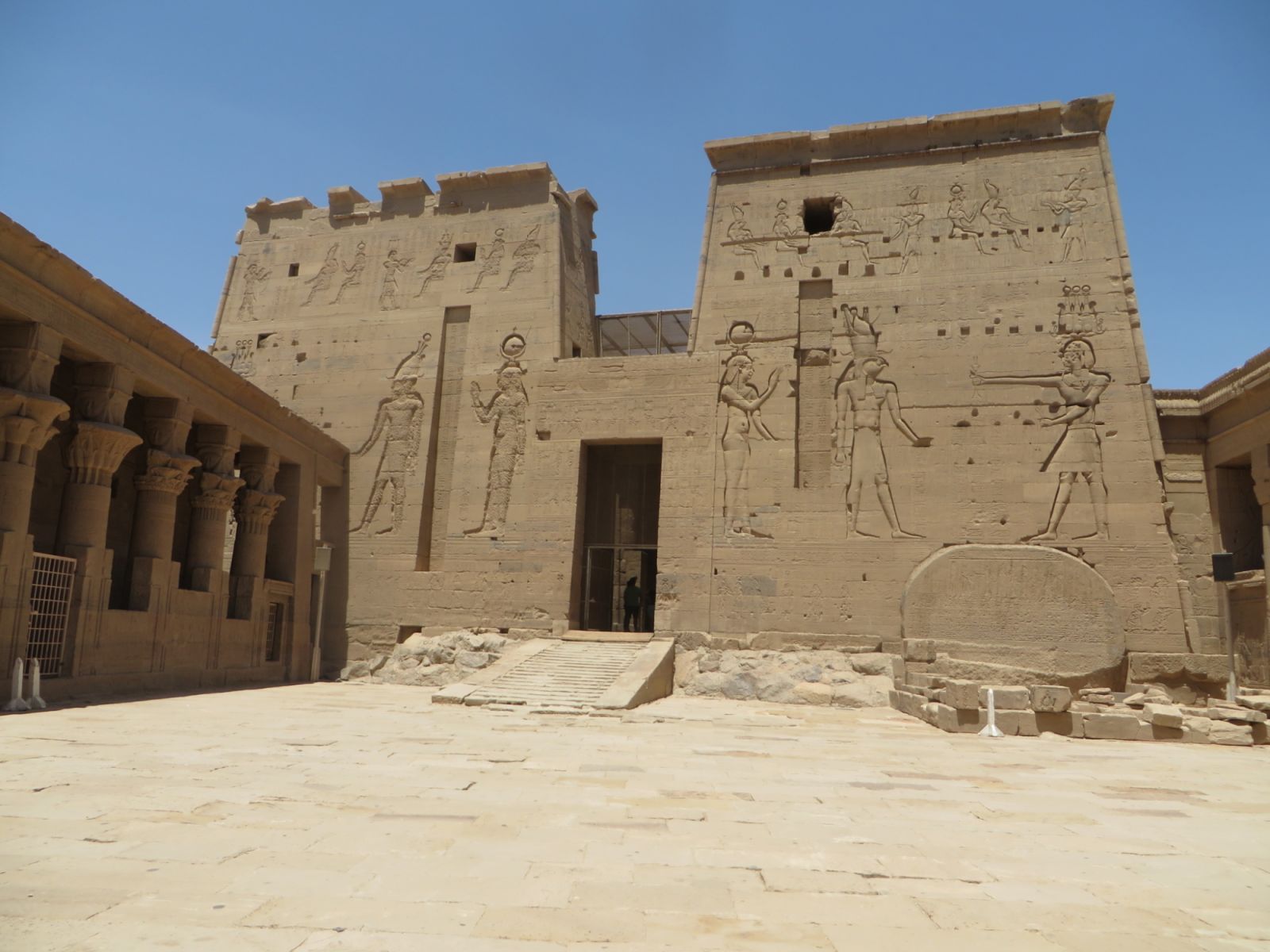
The facade of the Temple of Isis at Philae
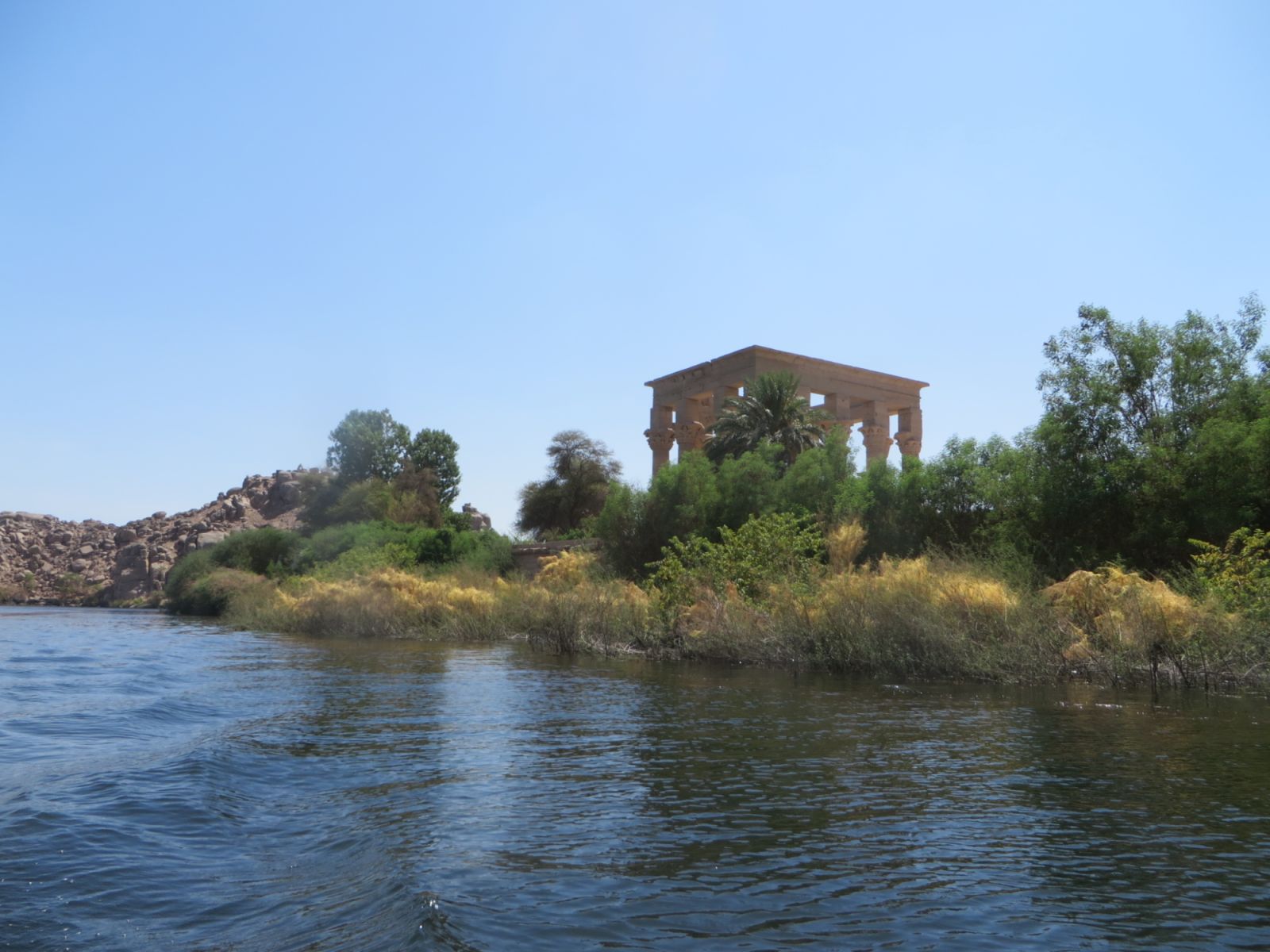
The kiosk of Trajan at Philae, rising out of Lake Nasser’s waters. It is believed the Roman emperor Trajan gave this building, likely used to shelter Isis’ barque (masted boat).
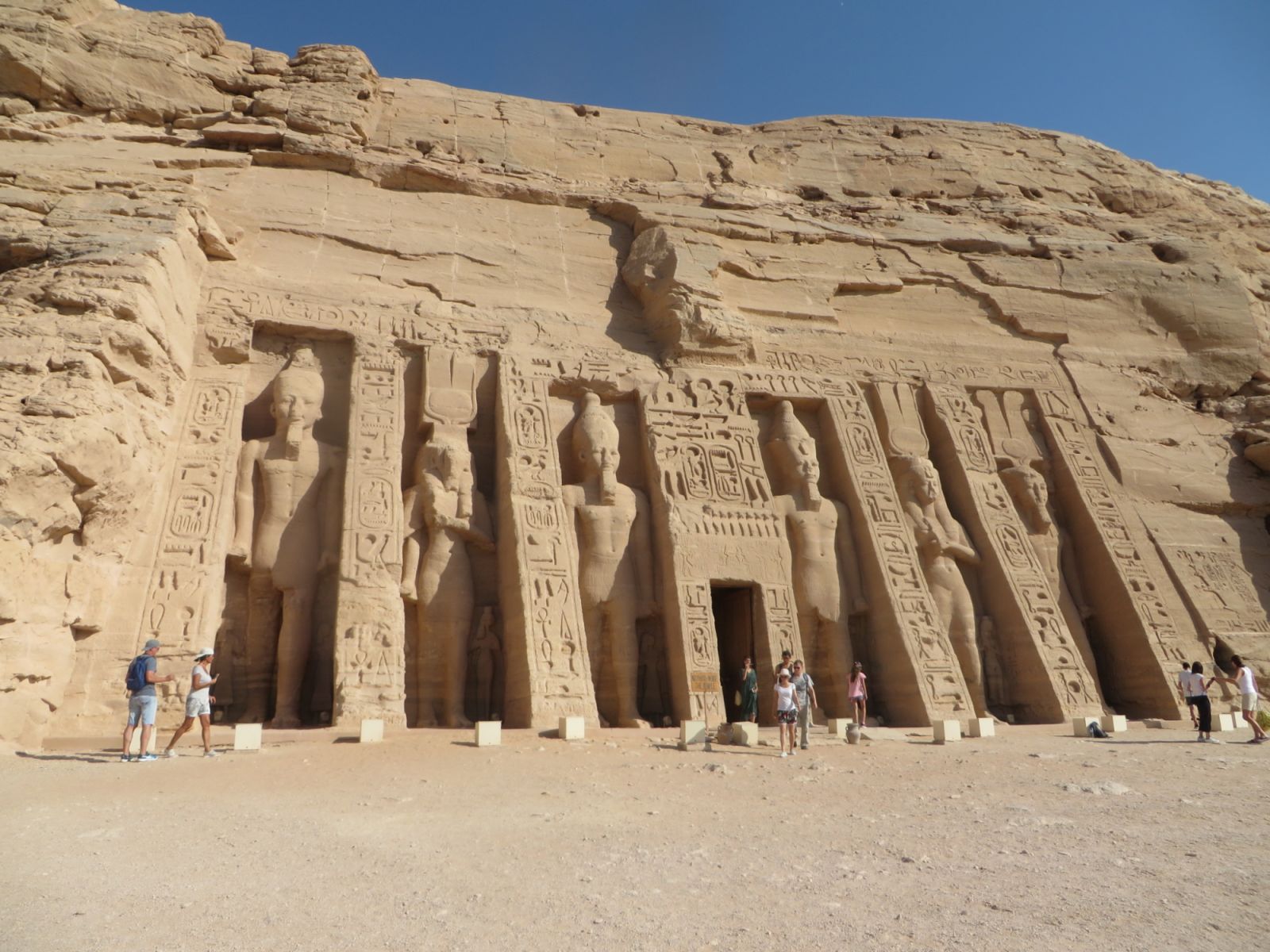
Temple of Queen Nefertiti at Abu Simbel

Temple of Ramsses II at Abu Simbel
